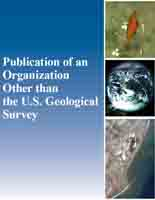In this chapter, we describe models of open populations that are subject to change over time due to additions and subtractions. Additions may be in the form of recruitment and immigration, and subtractions may be in the form of mortality, emigration, or both. Conceptually, these models are described by the Birth-Immigration-Death-Emigration (BIDE) model of population dynamics (Conroy and Carroll, 2009). In most cases, we will not formally distinguish between the two types of additions or of subtractions (birth/immigration or death/emigration), although sometimes this may be possible depending on the timescale of the study, spatial structure, and specific model assumptions (Zhao et al., 2017; see Section 2.10). In addition, distinguishing the different dynamic processes may also become possible in the presence of auxiliary data on some demographic rates, in the context of integrated population models (IPMs, Besbeas et al., 2002; see also Chapter 10). One type of open model, which allows for temporal variation in abundance but not explicit dynamics, is the simple model of temporary emigration (Kendall et al., 1997), which supposes that population size Nt changes randomly among open (primary) periods t, as a Binomial realization from some larger superpopulation. Over short timescales, this simple model may provide a sensible description of variation in population size over time.


